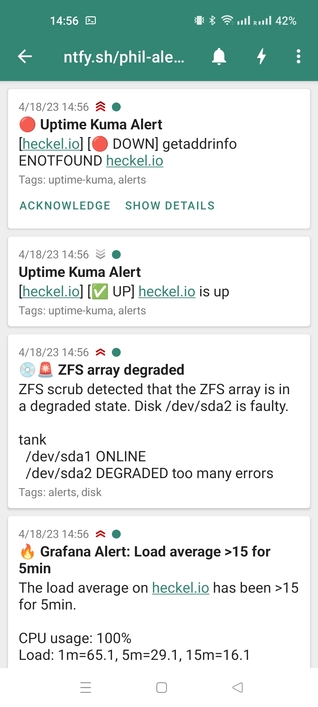HTTP/S Requests
- Text file download - Load into string
- Text file download - Save to file
- JSON download
- Binary download – Small files (less than 1MB)
- Binary download – Larger files (over 1MB)
- Upload a file
- Using ntfy
The requests library provides a convenient means to interact with websites, such as to download or upload files. Install the requests library and import it for all these recipes.
Text file download - Load into string
import requests
response = requests.get("https://codingquest.io/api/puzzledata?puzzle=1")
if response.status_code == 200:
print(response.text)
Text file download - Save to file
import requests
response = requests.get("https://codingquest.io/api/puzzledata?puzzle=1")
if response.status_code == 200:
with open("file.txt", "w") as f:
f.write(response.text)
JSON download
import requests
# Tomorrow's weather forecast for Hong Kong
url = "https://data.weather.gov.hk/weatherAPI/opendata/weather.php"
parameters = { "dataType": "fnd", "lang": "en" }
response = requests.get(url, params=parameters)
if response.status_code == 200: # 200 = Normal/OK
# Convert json response to list/dictionary structure
data = response.json()
day = data['weatherForecast'][0]['week']
max_temp = data['weatherForecast'][0]['forecastMaxtemp']['value']
min_temp = data['weatherForecast'][0]['forecastMintemp']['value']
wind = data['weatherForecast'][0]['forecastWind']
summary = data['weatherForecast'][0]['forecastWeather']
print("The weather for",day)
print("Minimum",min_temp,"Maximum",max_temp)
print(summary)
print("Wind:",wind)
Binary download – Small files (less than 1MB)
import requests, os
# Download a small binary file
response = requests.get("https://cataas.com/cat") # Random cat image
if response.status_code == 200:
with open('cat.png', 'wb') as f:
f.write(response.content)
os.startfile("cat.png") # Open with default Windows application
# subprocess.call(('open', filepath)) # Mac ... import subprocess
Binary download – Larger files (over 1MB)
import requests, os
url = "https://apod.nasa.gov/apod/image/2105/MWTree_Toledano_6016.jpg"
response = requests.get(url, stream=True) # note the stream=True
chunk_size = 2048 # number of bytes to download at a time
if response.status_code == 200:
with open('galaxy_tree.jpg', 'wb') as f:
for chunk in response.iter_content(chunk_size):
f.write(chunk)
os.startfile("galaxy_tree.jpg") # Windows
Upload a file
# Simple file upload
f = { 'file': open('report.pdf', 'rb') }
r = requests.post("https://httpbin.org/post", files=f)
# ... or to manually specify a filename and content_type
f = { 'file':
( "newname.pdf",
open('report.pdf', 'rb'),
"application/pdf",
{"Expires": "0"}
)
}
r = requests.post("https://httpbin.org/post", files=f)
# ... or to upload a string as a file
f = { 'file': ("newname.pdf", data_string, "application/pdf", {"Expires": "0"} ) }
r = requests.post("https://httpbin.org/post", files=f)
Using ntfy

Ntfy.sh is a cool service that allows you to quickly and easily send notifications to your phone from code. You can either use the service provided by ntfy.sh, or self-host it if you have a server to install it on, obtain it from here https://github.com/binwiederhier/ntfy.
While you can sign up for a free service using the ntfy.sh server, the free service does limit you in that channels can not be made private. Anyone who knows your channel name can (a) subscribe to receive messages sent to that channel, and (b) send messages to that channel. Therefore it is recommended that (a) you don’t use ntfy.sh for anything private, and (b) you host your own service if possible (it is fairly easy to set up).
import requests, json
CHANNEL = "my-channel"
# Use a self-hosted ntfy server
def test1():
response = requests.post("https://ntfy.yourdomain.com/"+CHANNEL,
data="Test 😀".encode(encoding='utf-8'))
print(response)
# Send header information with a clickable link
def test2():
requests.post("https://ntfy.sh/"+CHANNEL,
data="Test link to my website",
headers={ "Click": "https://pbaumgarten.com/" })
# Send header information with two action buttons
def test3():
requests.post("https://ntfy.sh/",
data=json.dumps({
"topic": CHANNEL,
"message": "You left the house. Turn down the A/C?",
"actions": [
{
"action": "view",
"label": "Website",
"url": "https://pbaumgarten.com/",
"clear": True
},
{
"action": "http",
"label": "Other",
"url": "https://pbaumgarten.com",
"body": "{\"boo\": 65}"
}
]
})
)